10 tips to shoot safari-style photos at a zoo or wildlife park
Now that zoos and wildlife parks are open again, here are 10 tips to take photographs worthy of a safari
Watch video: 10 tips to shoot safari-style photos at a zoo or wildlife park
Photography projects at home
• More home photography ideas
Useful home photography kit
• Best tripods
• Best lighting kits
• Best reflectors
• Best macro lenses
Now that zoos and wildlife parks are opening up again, you can once again stretch your legs and extend your zoom lens to get some cracking animal shots.
And, by employing these techniques and a little bit of consideration, you can take big cat photographs at your local zoo that look like they were taken while on a safari on the savannah!
Unlike safaris, where there's no guarantee of seeing your favorite animals, wildlife parks offer assured access to these incredible creatures – but the drawback is that there’s a physical barrier between you and them. Though that's no bad thing, considering these are predators that could consider a photographer to be a snack!
• Read more: Photography tips
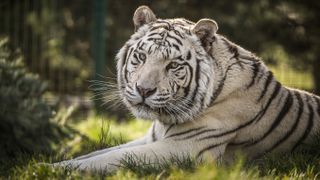
By following these steps, you can take brilliant and natural-looking images that look like they could have been shot in the wild – but you’ll need to try to get closer access than a regular zoo can provide.
We headed to The Big Cat Sanctuary in Kent, south east England – a charitable organization dedicated to the conservation of these creatures. We shot them under the watchful eye of lead photographer Alma Leaper, who was able to encourage the big cats into the perfect position with the help of meaty treats thrown into their enclosures.
Armed with our camera and a big telephoto zoom, we were able to press our lens up close to the fence and, using a wide aperture, shoot through the gaps and melt away the fence. We could fire away while the cats kept their distance for us to compose some great wildlife shots…
• See also Best camera for wildlife
01 Lens choice
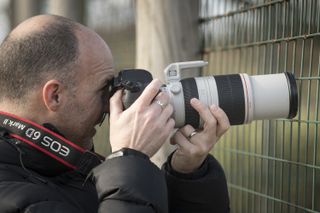
We used a Canon EF 100-400mm telephoto-zoom – but as we got close to the animals, we could get away with a standard zoom too. Longer focal lengths and faster apertures enable you to achieve a shallower depth of field – all important for that ‘on safari’ look.
02 Exposure and aperture
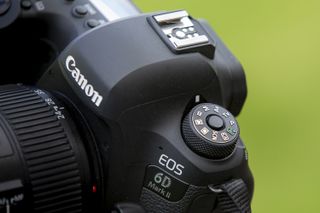
Shoot in aperture priority or manual and start with an aperture of around f/5.6. This will ensure that the animals’ facial features are sharp, with their bodies slowly falling out of focus – and distracting backgrounds, such as fences that give the game away, will be blurred.
03 Spot metering
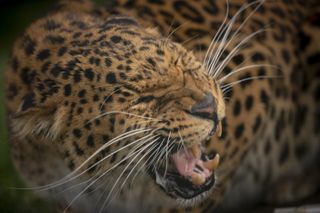
It’s crucial that the animal is properly exposed – set spot metering so that the exposure is weighted towards the selected focus point, which will be on the cat. The center-weighted metering mode would try to expose the entire scene, but the subject is more important.
04 ISO and shutter speed
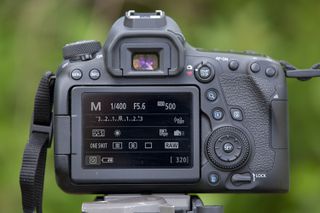
The big cats we were shooting weren’t running around, so we didn’t need a super-fast shutter speed – just enough to avoid camera shake. Aim for at least ‘one over’ the longest focal length of the lens – so, 1/400 sec for a 400mm. Increase the ISO, if needed, to achieve this.
05 Continuous focusing
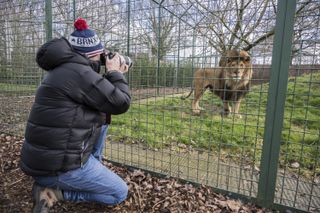
Set continuous autofocus mode to track the animals, combined with a low-speed continuous burst mode. You don’t need to be shooting at 10fps for these cats, so avoid high-speed continuous to avoid filling up the memory card.
06 Pinpoint focus
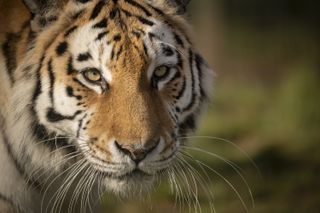
Set a single AF point mode and position this at one side of the frame, so that there’s negative space for the cat to move into. Keep focus on the animal’s nearest eye so that it’s sharp as you follow it around. Zoom in and out to capture a variety of body shots and close-up portraits.
07 Set-up: zoom in close
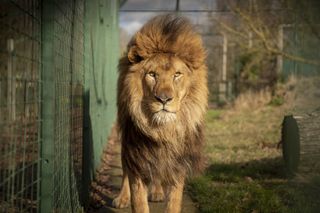
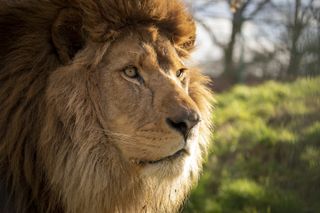
The combo of wide aperture, telephoto focal length and your focusing distance will mean your depth of field is so shallow that the bars on the cage will vanish. For the best results shoot as close to the fence as you possibly can, then be bold with your composition and fill the frame with these strong animals. As we discovered up close, male lion’s heads are huge – so it’s easy to get a tightly framed portrait even when shooting at 100mm.
08 Set-up: exposure compensation
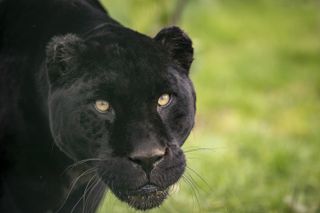
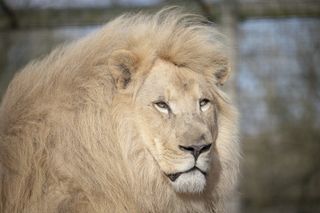
Big cats come in all colors, from near-white lions to black jaguars, and spot metering will ensure that your camera biases its exposure to the subject. However, your metering system will still try to expose for a midtone, so you will have to dial in negative exposure compensation for cats with dark fur, and positive exposure compensation for animals with lighter fur (if shooting in manual mode, increase or decrease the ISO and/or shutter speeds).
09 Set-up: better backgrounds
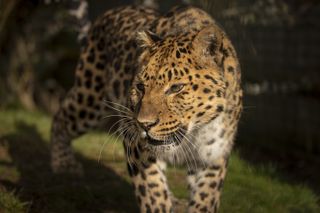
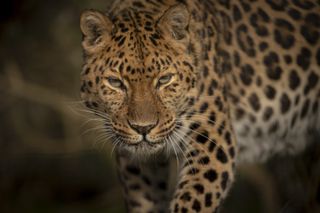
Try lots of compositions, and try placing your subject to one side of the image and leaving space for it to look or ‘move’ into. Look to avoid man-made objects in the frame to maintain the natural ‘safari’ feel to your shots. If you can’t blur out the fence at the end of the pen, try composing with some more natural elements positioned behind the animal.
10 Set-up: capture behavior
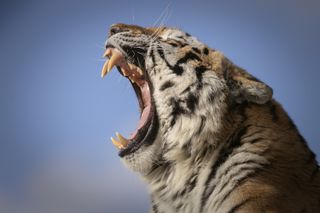
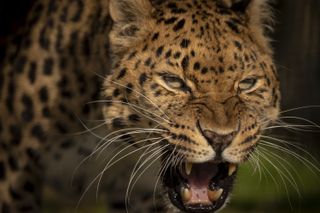
Look to take dramatic photos that capture the big cats displaying emotion – and their impressive teeth! This can help show a powerful predator on the prowl, rather than a captive cat. These beasts love to climb up high, and this offers a great chance to zoom in with a super-telephoto to capture them against the sky. A good tip is to find out from your guide which cats are likely to show off, then be patient and sit ready with your lens raised and pre-focused on them; it may be a fleeting display, so shoot with a fast shutter speed.
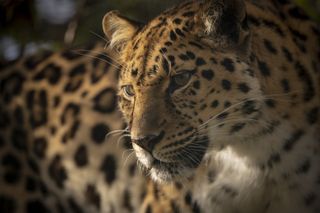
The Big Cat Sanctuary is a charitable organization dedicated to the conservation of endangered feline species. While many of its inhabitants are rescue animals that wouldn’t survive in the wild, it participates in breeding programs, with ultimate reintroduction to the wild as part of the global breed for release programs. It runs regular photography days, among other fundraising events, where small groups get the chance to photograph these magnificent creatures at close quarters. For more info, visit thebigcatsanctuary.org.
PhotoPlus: The Canon Magazine is the world's only monthly newsstand title that's 100% devoted to Canon, so you can be sure the magazine is completely relevant to your system.
More videos:
Photography tips and techniques videos
Zoo photography tips: how to get great pictures of animals
The best Canon telephoto lenses
Get the Digital Camera World Newsletter
The best camera deals, reviews, product advice, and unmissable photography news, direct to your inbox!
The editor of PhotoPlus: The Canon Magazine, Peter 14 years of experience as both a journalist and professional photographer. He is a hands-on photographer with a passion and expertise for sharing his practical shooting skills. Equally adept at turning his hand to portraits, landscape, sports and wildlife, he has a fantastic knowledge of camera technique and principles. As you'd expect of the editor of a Canon publication, Peter is a devout Canon user and can often be found reeling off shots with his EOS 5D Mark IV DSLR.

